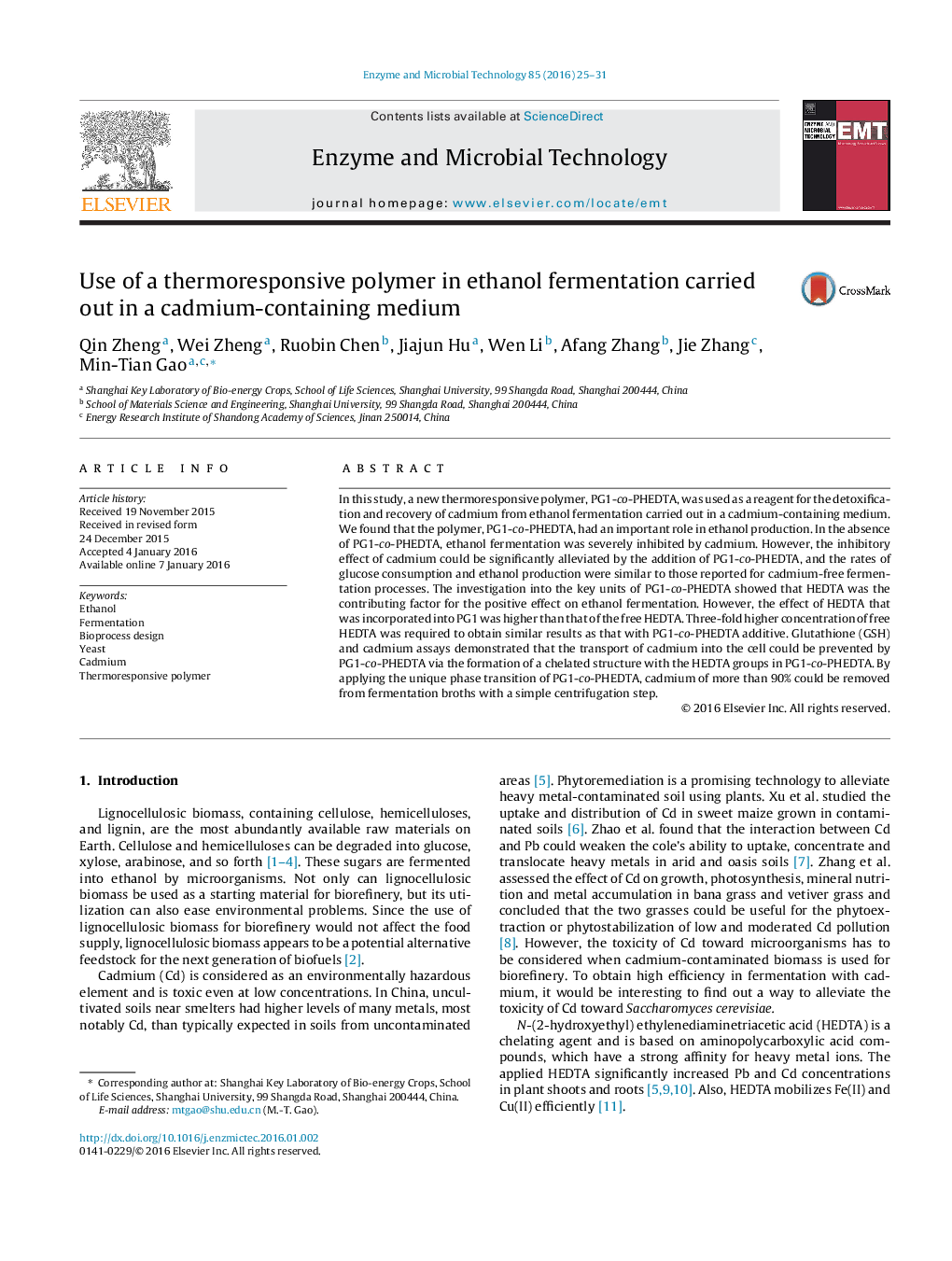| Article ID | Journal | Published Year | Pages | File Type |
|---|---|---|---|---|
| 16867 | Enzyme and Microbial Technology | 2016 | 7 Pages |
•The first use of thermoresponsive polymer in ethanol fermentation.•The polymer with HEDTA helps yeast cope with Cd toxicity efficiently.•The polymer with HEDTA significantly enhanced fermentation efficiency.•An efficient and simple recovery method for cadmium was proposed.
In this study, a new thermoresponsive polymer, PG1-co-PHEDTA, was used as a reagent for the detoxification and recovery of cadmium from ethanol fermentation carried out in a cadmium-containing medium. We found that the polymer, PG1-co-PHEDTA, had an important role in ethanol production. In the absence of PG1-co-PHEDTA, ethanol fermentation was severely inhibited by cadmium. However, the inhibitory effect of cadmium could be significantly alleviated by the addition of PG1-co-PHEDTA, and the rates of glucose consumption and ethanol production were similar to those reported for cadmium-free fermentation processes. The investigation into the key units of PG1-co-PHEDTA showed that HEDTA was the contributing factor for the positive effect on ethanol fermentation. However, the effect of HEDTA that was incorporated into PG1 was higher than that of the free HEDTA. Three-fold higher concentration of free HEDTA was required to obtain similar results as that with PG1-co-PHEDTA additive. Glutathione (GSH) and cadmium assays demonstrated that the transport of cadmium into the cell could be prevented by PG1-co-PHEDTA via the formation of a chelated structure with the HEDTA groups in PG1-co-PHEDTA. By applying the unique phase transition of PG1-co-PHEDTA, cadmium of more than 90% could be removed from fermentation broths with a simple centrifugation step.
